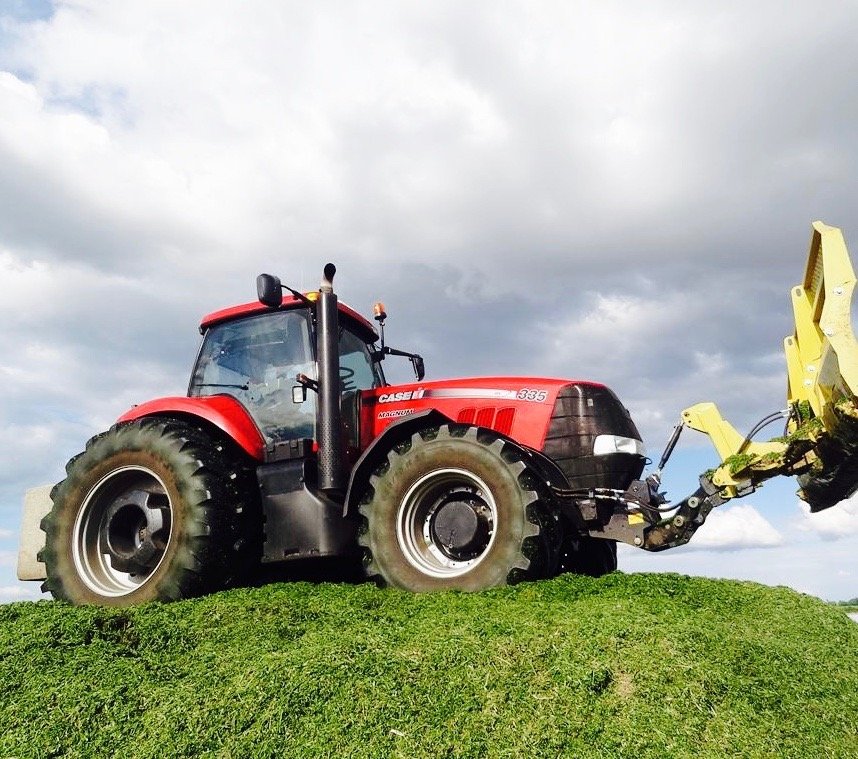
Can multi-species herbal leys make good silage?
The advocates will point out all the benefits of herbal leys or diverse grassland but how suitable is it to making good silage, and what special measures should you take to make good multi-species silage?

How many bacteria do you need to make good silage?
….. when you are faced with a “challenging crop” that might be a bit tricky to ensile. It’s tempting to up the dose rate on these crops, to “give it a bit of helping hand” with an extra dose of inoculant. But more isn’t always better because the number of bacteria is actually misleading.

NIR Silage sensors, what is the future?
track the whole progress of the crop from field to trough. With the right information you could refine your practices to reduce losses and make the very most out of the forage.

Is Lasagna silage worth the bother?
Silage lasagna……, is not some sort of vegan health food, it’s just a way of making silage that might give your nutritionist a much easier time. In essence it’s all about the layers

How to avoid slurry contamination in silage
slurry in the silage is a very bad thing and something we all need to avoid but changes in regulations are increasing the chances of bringing slurry contamination in with your grass silage. ……we need to find some solutions.

Farming silage bacteria for profit
So is farming bacteria a new way for farmers to develop a new market?
Eeeerrr no, that’s not what I was thinking. Farming bacteria is really what many farmers are already doing but without really thinking about it. Being better bacteria farmers is a way of controlling the costs of production

Silage dry matter analysis
The silage analysis report tells you how you did this summer, and what you are going to have to work on during the winter. And just like the school report…. and silage dry matter really does matter

Designing silage clamps for year round feeding
how do you design silage clamps for cows housed 365 days a year and is there any difference to a traditional winter fed clamp design?

High dry matter maize silage - harvest do’s and don’ts
To make the most of what is available, you need to plan the harvest very carefully. So what are the potential pitfalls for this years maize harvest? In summary it’s a list of do’s and don’ts, and in particular a list of don’ts!

Can I leave sheeting the clamp until the morning?
…at the end of a long day, is it really necessary to sheet up silage or will it be ok to leave it until the morning? If it’s not going to rain, it can’t come to much harm can it? Well….. …yes it does matter.

Can you make silage TOO fast?
….is all this haste really necessary to make good silage or would a bit less speed make better silage?

How to apply the right amount of silage additive
So you’ve done the technical bit and chosen the best silage additive….. but how are you actually going to apply it?

Using Acetic Acid or Potassium Sorbate to aid stability in silage
silage additives have the choice of two different substances to fight aerobic moulds and yeasts, acetic acid and potassium sorbate

How to predict silage clamp losses
Trying to predict what these losses might be and where they might be occurring

What is the ideal width for a silage clamp?
The chosen width of the clamp is super critical in design process. For any given storage size, the width of the clamp is the real dictator in the design layout.

Silage Clamps and Big Tractors
Back in the day a tractors all up weight was unlikely to come anywhere near to the clamp limits but today it’s extremely likely to overload the clamp walls.

What’s best to compact the clamp – big tractor tyres or train wheels?
Forage consolidation is critical to all good silage production but it’s especially critical for silage that’s more susceptible to aerobic instability – so silage with high dry matters and silage that’s going to be fed out during the summer months. Good consolidation isn’t just a result of the weight of the tractor driving on top of the clamp; it depends on what is actually in contact with the forage itself.

Protecting the silage clamp
It’s an unfortunate truth but silage and concrete are not really a compatible couple and don’t make happy bedfellows. It’s all because of the basic chemistry – silage is acidic and concrete is alkaline

Half full or half empty?
Poor establishment or untried varieties can produce yields that don’t live up to expectations. So if you’re faced with a taster sized portion of forage when you have clamp room for a banquette, what are your best options?

Aerobic instability in silage and what you can do to control it.
Aerobic stability is the one single area where most farmers can reduce the losses and improve the physical and financial performance of their forage based enterprise. And just to grab your attention – if you get this bit wrong, you can lose 40% of the feed value of your silage!